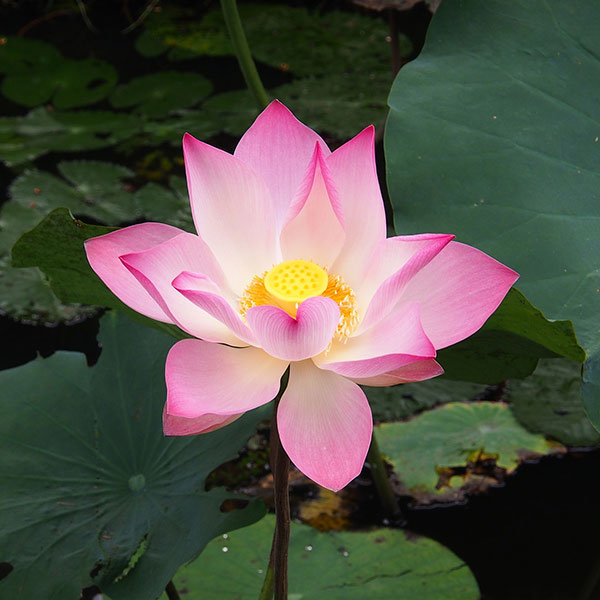
- Home
- Altars
- Architecture
- Attire
- Bamboo
- Cities and Roads
- Elevation
- Fruits
- Lotus
- Markets
- Music
- Natural Resources
- Rice
- Rivers & Waterways
- Where is Vietnam?
Lotus

In Vietnam, the Lotus flower is the national flower. It is known as the flower of the dawn and is the symbol of purity, commitment and optimism for the future. At night the flower closes and sinks underwater and rises and opens again at dawn.

The lotus is found throughout Vietnam in the muddy water of lakes and ponds. Here, lotus flowers bloom in the Mekong Delta.

Lotus is an important ingredient in Vietnamese culture and every part is utilized in both cuisine and medicine.

Young lotus stems are used in salads, stamens are dried and made into an herbal tea, and lotus seeds are eaten raw, dried or boiled.

Lotus leaves are used to wrap food such as this dish where rice is steamed in lotus leaves.

Raw lotus roots are cut up and used in salad.

Slices of lotus are featured in bun xao, a stir fried rice noodle dish.

The lotus flower has inspired architecture, such as the Tram Huong Tower in Nha Trang, Vietnam, an ocean town visited by many tourists. This is located right near the ocean on a street corner.

Now performed internationally, the Lotus Dance was originally created in the 1600s in the Vietnamese palaces of the kings. The dance is a Buddhist tradition and mimics the opening of the lotus flower, celebrating Buddha's birth.

The lotus flower is often referred to in Vietnamese songs and poems.

Cities throughout Vietnam set up New Year's archways to welcome Tet, the Vietnamese New Year. This archway, inspired by the lotus flower, was located on Nguyen Hue Boulevard, in Saigon (Ho Chi Minh City), 2014. This archway was the inspiration for Voyage to Vietnam's entry archway.

Cities throughout Vietnam set up New Year's archways to welcome Tet, the Vietnamese New Year. This archway, inspired by the lotus flower, was located on Nguyen Hue Boulevard, in Saigon (Ho Chi Minh City), 2014. This archway was the inspiration for Voyage to Vietnam's entry archway.

The lotus flower was used as a model for the signage through the Voyage to Vietnam exhibition.